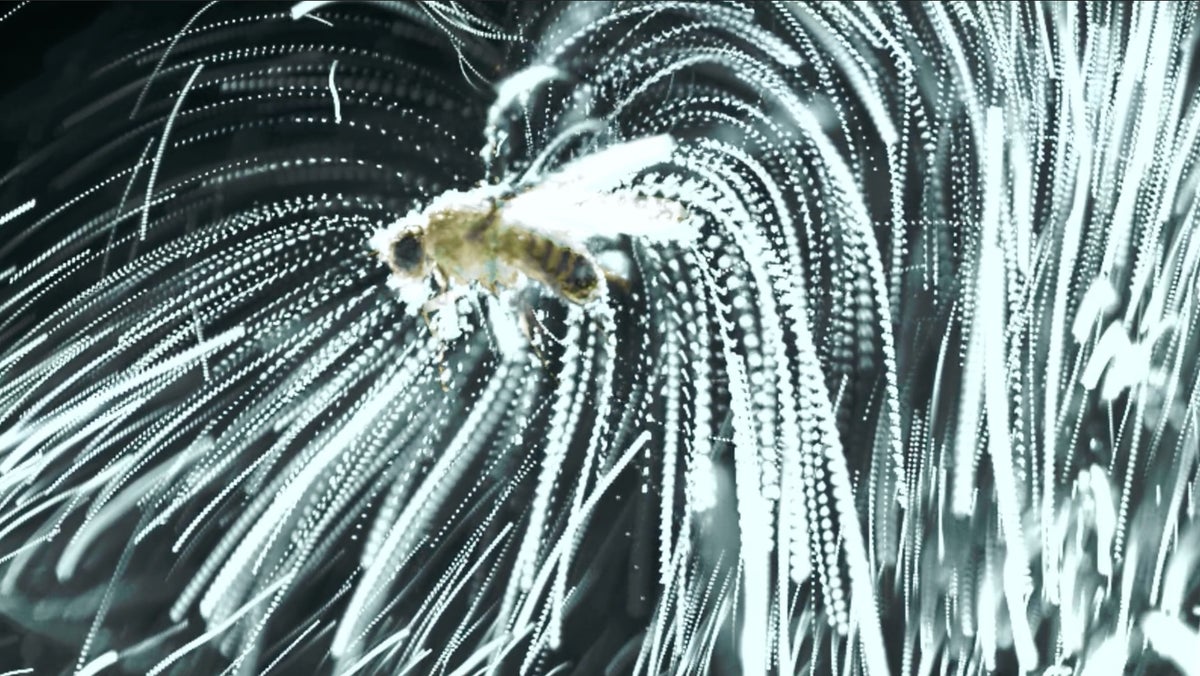
"At first glance, it's a wonder that parasitic nematodes exist at all. To reproduce, these minuscule creaturesroughly the size of a pinpointmust leap 25 times their body length and land on a flying insect as it zooms overhead. Given that wind, gravity and air resistance all stand in the way of a bull's-eye, the worms' chances seem poor. But new research shows there's another force working to their advantage: static electricity."
"You walk across the carpet, friction transfers electrons from the floor to your socks, and you receive a mild zap when the electrical imbalance rights itself by discharging to the first metal doorknob you touchouch. But similar processes hold tremendous sway in the teensy world of insects. According to a new study in Proceedings of the National Academy of Sciences USA, the mere beating of insect wings generates enough positive charge to pull an oppositely charged, airborne nematode inexorably toward its unlucky host."
Parasitic nematodes must leap about 25 times their body length to land on flying insects for reproduction. Wind, gravity and air resistance make precise landings difficult. Beating insect wings generate positive electric charge that attracts oppositely charged airborne nematodes, pulling them toward hosts. Static-electric forces serve as an electrical tractor beam, allowing nematodes to be only roughly close when they jump rather than precisely accurate. Small-scale electrostatic interactions exert strong influences in insect ecology, affecting flower-bee signaling and deforming charged spiderwebs. These forces matter more at tiny scales than at human scales, where static is a minor curiosity.
Read at www.scientificamerican.com
Unable to calculate read time
Collection
[
|
...
]